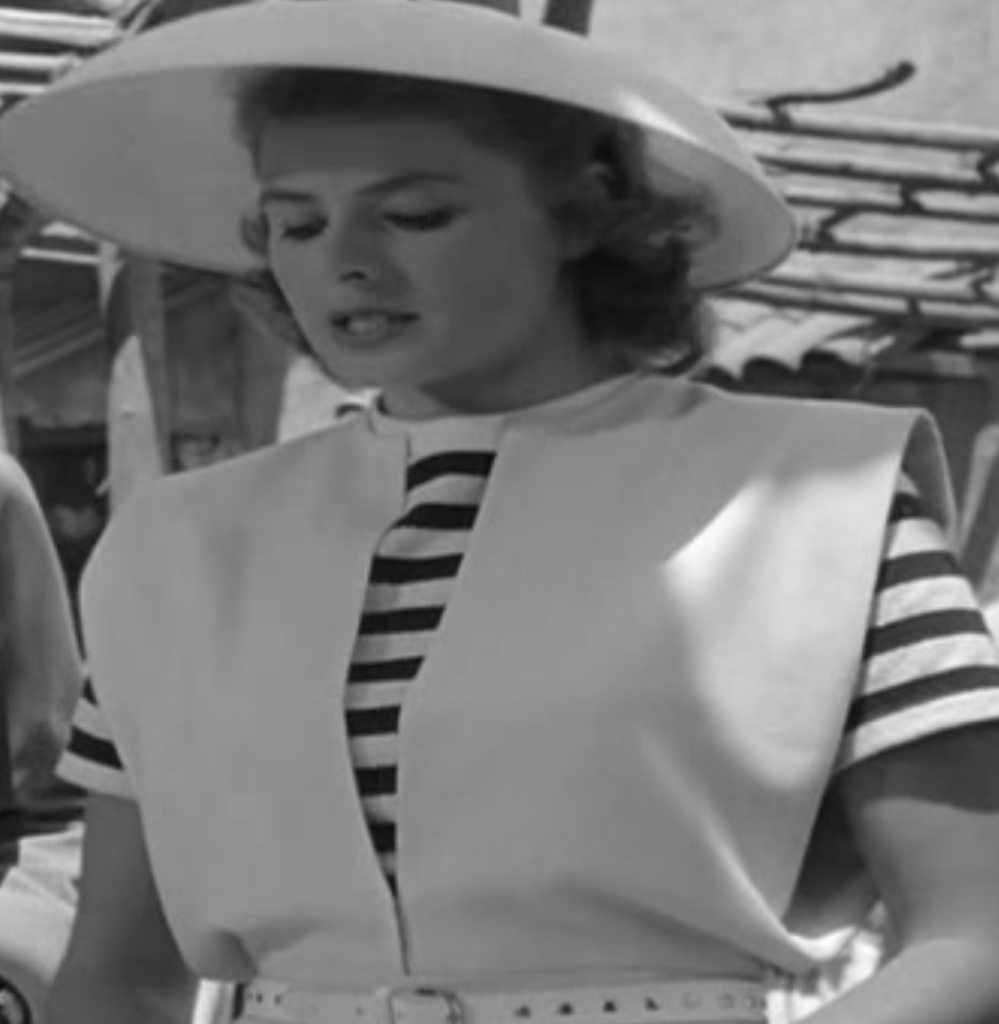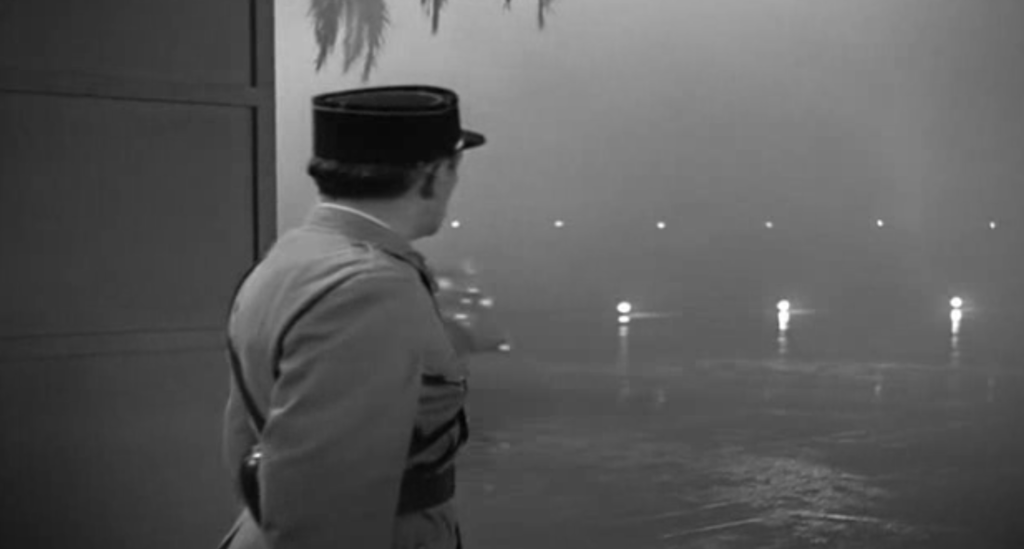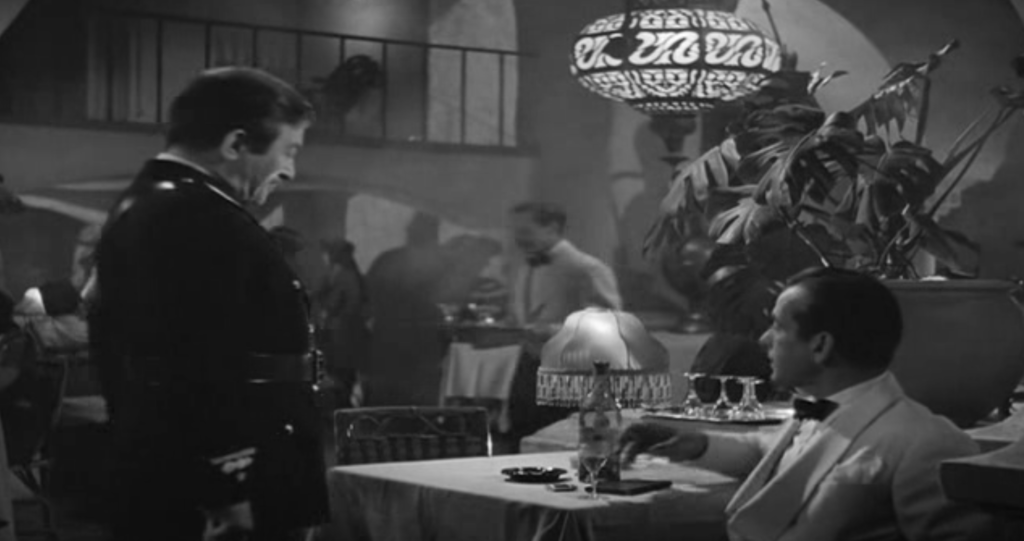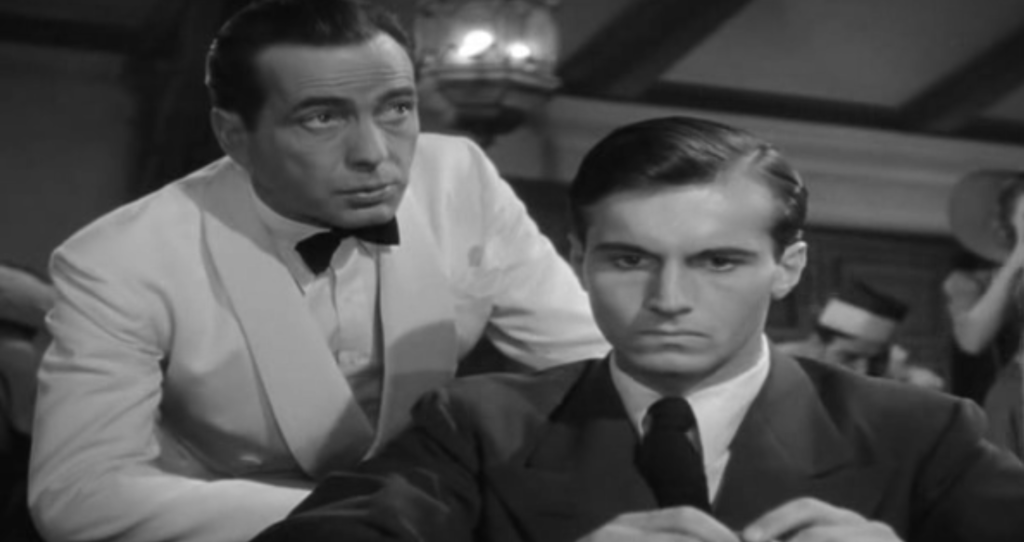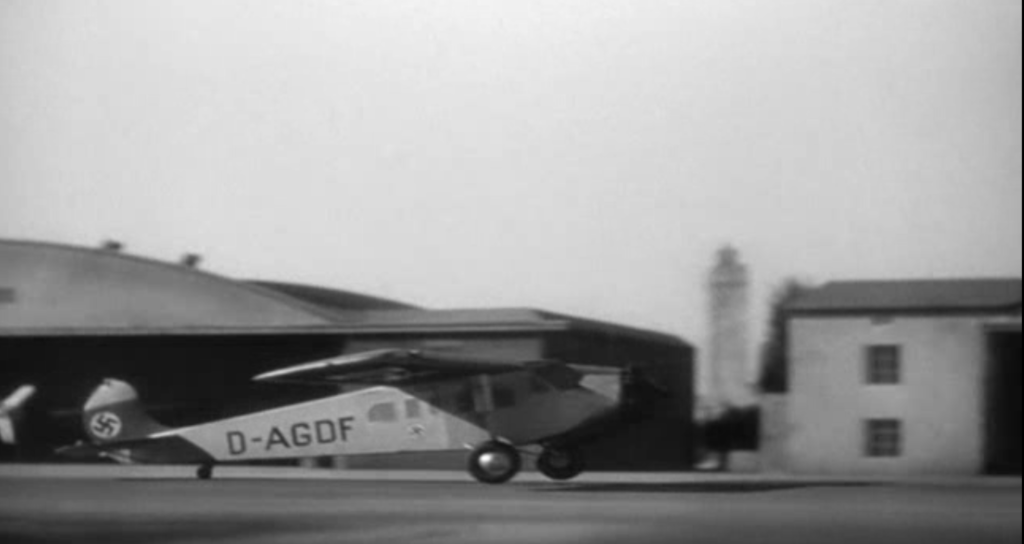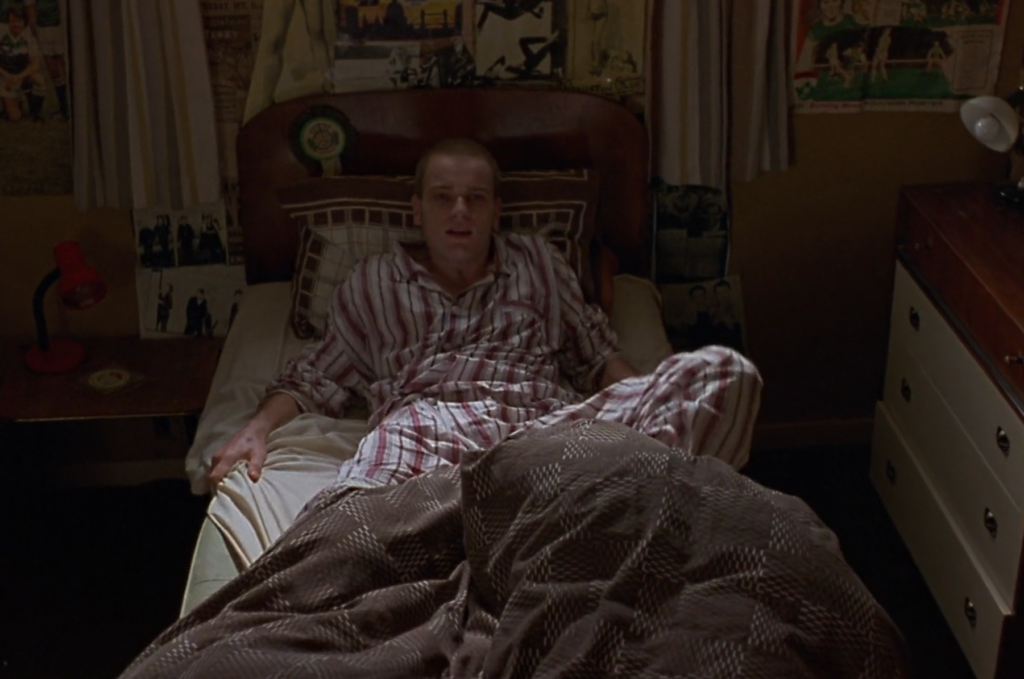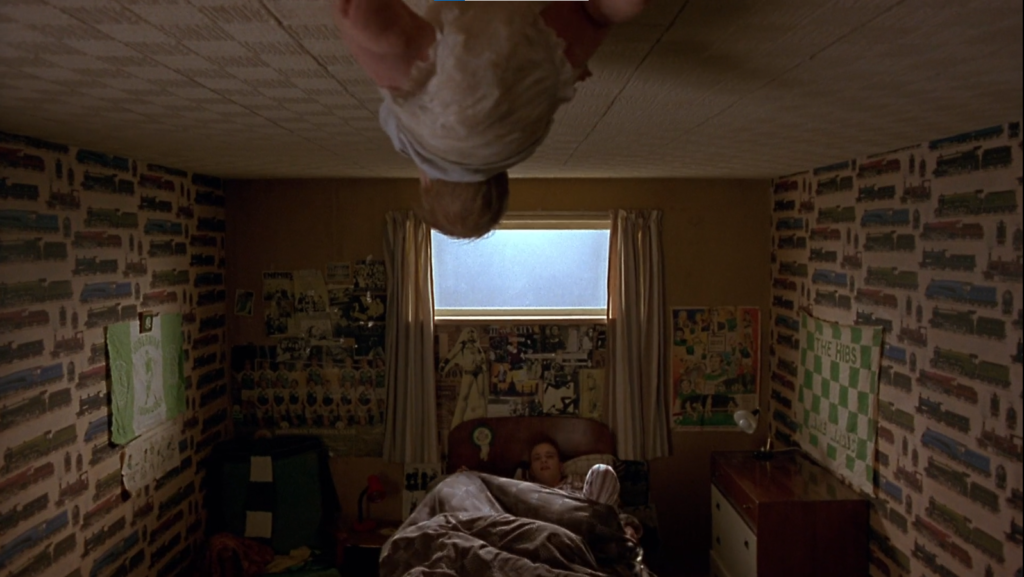The key characters:
Ofelia – daughter of Carmen
Carmen – heavily pregnant ‘new’ wife of the captain.
Captain Vidal – Soldier in Franco’s Army
Mercedes – housekeeper
Doctor
Officers and Soldiers in Franc’s Army
Communist / Left wing rebels
Fantasy characters:
Pan (a faun)
Faries (x 3)
The Toad under the tree
The Pale Man
The King and Queen of the Underworld
First Response
| Score: 8/10 | Memorable scene: I think the most memorable scene was when the white pale man was chasing after Ofelia. The shots jumping, one showing Ofelia’s point of view (drawing the escape root on the ceiling and then it jumping to the white man stumbling closer and closer to her. This scene created such an immense amount of tension you are on the edge of your seat, always questioning will she make or will she get caught. | Iconic Image: I think the most iconic image is the cover of the film. It clearly shows the vulnerable little girl and the intimidating pathway. It captures the audience’s attention as they could want to know what lies beyond that path. |
Micro-elements:
Sound:
The Sound Design of the effects that accompany the violence is very realistic. This is most likely enhanced in post-production by Foley artists. As parts of this film fit a horror genre this adds to the horror and emotional impact of those violent actions on the viewer. There is also a music motif in the Lullaby that is sung to Ofelia. It can be diegetic when sung by an on-screen characters (the Mother or Mercedes) but it becomes the theme tune for the film taking on a number of different musical forms (orchestral) adding to the suspense in places or the emotional state of Ofelia (rather like the ‘Time Goes By’ tune is manipulated in ‘Casablanca’.)
Cinematography:
The cinematography in Pans Labyrinth helps support the narrative as well as the fantasy world and real world.
When we first see Captain Vidal there is a close up shot that shows his stern, serious facial expression and the staccato simple shots reflect on his personality. He is a very traditional character which can also relate to the simple shots.
When we enter, the fantasy world the shots become long shots and extra long, this helps us see the scenery around the fantasy and also see how different it is to the real world.
Mise-en-scene:
Del Toro has a very unique and individual way for his approach of editing. He sketched out ideas in a notebook and was very into animations and CGI. The fawn, mandrake and the white man were CGI. Del Toro recorded the sounds of the toad himself and similar animatronics.
Editing:
The editing used in Pans Labyrinth heavily supports the ideas of the fantasy world and the ‘normal’ world. A few diegetic wipes are used or cross-dissolves to and from black – thus forging a link, showing a particular inkling of when it is fantasy and not.
Representation (Gender)
Main women:
All three women are looked upon negatively from the captain’s point of view. The first encounter we see of him, and Carmen is negative as he forces her to sit in a wheelchair when she did not want to. This automatically sends out the conventions that Carmen is a weaker character who holds less authority. Mecedes is the stereotypical maid to the captain who obeys his orders whenever given. However, she secretly fights against the captain and is helping the other side. This shows Mercedes holds power in secret, she is represented in two ways. You can argue that she is more of a motherly and maternal towards Ofelia than Carmen is. Ofelia is away in her own world; she disobeys her mother’s order as she continues to dislike the captain and separate herself away from him. She is a countertype when it comes to the way little girls were in those times/traditionally as she does not do what she told.
Main men:
Captain Vidal is the dominant male within Pans Labyrinth. He is the villain in the movie manipulative, controlling towards all/most characters. The officers/soldiers are extremely on edge and cautious when around him. The doctor is a positive and rebellious character; he tricks Captain Vidal and ends up stealing necessities.
Aesthetics
Ofelias lighting is warm, golden with lots of curves and Vidals lighting is cold with lots of straight lines.
The film is magical realism meaning it involves both very realistic set and lift of the 1944 Spain and it also shows the fantastical life of Ofelia.
CGI is used to cut out the actor’s leg when playing the Faun, the Faun has a very sharp acute angled leg which does not match a human. The actor must wear green leggings to make it easier in the post editing. The use of animatronics is also used in the Fauns costume; the ears and tail are both electrically.
Historical Contexts
It is the after math of the Spanish civil war which the fascist won (1936-1939).
In this film the rebels were the winners, the rebels are the good even though the doctor and Mercedes had to steal to get necessities the rebels believe in the equality of people and the fascist only thought of themselves and that reflected on the ending of the film.
Institutional Context
Spanish because it is made in Spain and so is the cast apart from jones. Del toro and friends put their own money into this film (passion project). Usually, the big money studios have a big say in what the film is like and del toro did not want that, as he used his own money, he and friends had the very first and last say. It was made for 19 million dollars; this is due to the large crew and the make-up and costumes took lots of money to build. It made just over 83 million dollars in the box office. It won 3 Oscars, 1-cinematography, 2-make-up, 3-art direction.






























